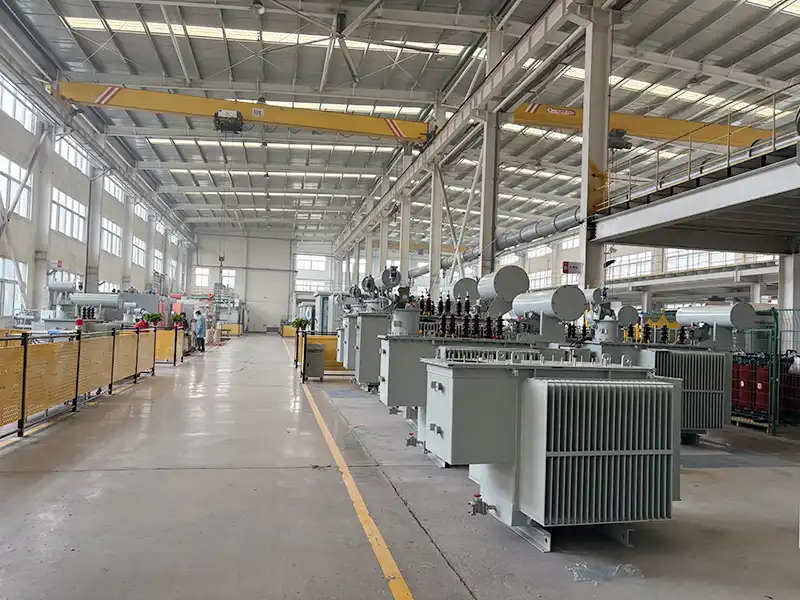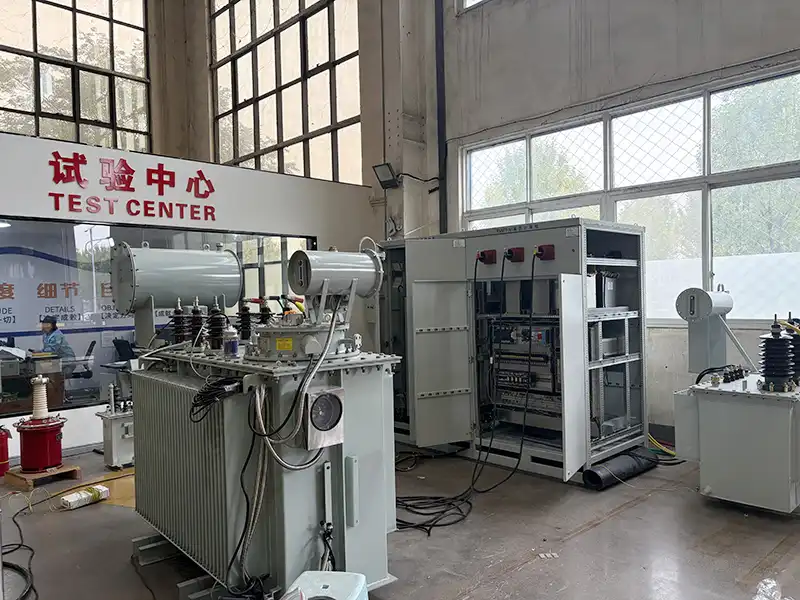What are the differences between dry-type transformers and oil-immersed transformers? If you’ve been wondering about this, read on!
This article will provide clear answers and help clarify any confusion.
What is a transformer?
Simply put, a transformer is an electrical device that uses the principle of electromagnetic induction to change the voltage of an alternating current (AC). Its main function is to convert AC voltage and current from one level to another to meet different power demands, while enabling efficient transmission and distribution of electrical energy.
Transformers are mainly divided into two types: dry-type and oil-immersed. Although they serve the same basic purpose, there are significant differences between them. Each type is better suited for specific application scenarios.

What is a dry-type transformer?
A dry-type transformer is one in which the core and windings are not immersed in insulating oil. Its windings operate in a solid, dry environment, relying on air, epoxy resin, or other solid insulating materials for both insulation and heat dissipation. This design stands in clear contrast to traditional oil-immersed transformers.
What is an oil-immersed transformer?
An oil-immersed transformer is a power transformer in which the core and windings are submerged in specialized transformer oil. This type is the most widely used, technologically mature, and covers a broad range of capacities in power systems.

Dry-Type vs. Oil-Immersed Transformers: Key Differences
In the field of electrical equipment, dry-type and oil-immersed transformers are commonly used. Choosing the right type is crucial. This article explores the differences between them, comparing their features to help you understand their unique characteristics and applications—and make an informed choice.
Significant differences exist in cooling methods, maintenance needs, operating costs, recyclability, energy efficiency, and suitable scenarios. A detailed comparison is provided below:
Dry-Type Transformers
Cooling Method: Uses air as the cooling medium, relying on airflow to dissipate heat.
Maintenance Requirements: Good resistance to chemical corrosion; daily maintenance is simple. Minor faults often don’t require power disconnection, leading to lower maintenance costs.
Operating Costs: Higher initial cost and relatively higher energy consumption during operation, resulting in higher overall operating costs.
Recyclability: Coil materials are difficult to recycle after the transformer reaches the end of its service life.
Energy Efficiency: Relatively large in size, with lower rated voltage. Prone to overheating under overload, leading to higher energy loss.
Applicable Scenarios: Due to high safety—no risk of oil leakage or explosion—it is widely used indoors, such as in shopping malls, office buildings, and hospitals.

Oil-Immersed Transformers
Cooling Method: Uses insulating oil as the cooling medium, offering high heat dissipation efficiency.
Maintenance Requirements: Requires regular oil testing and filtration to prevent chemical contamination. Oil filtration should be performed at least once a year, making maintenance relatively complex.
Operating Costs: Mature manufacturing technology leads to lower equipment prices. High energy efficiency offers good operating economy.
Recyclability: Core and other components are easy to recycle, supporting resource reuse.
Energy Efficiency: More efficient than dry-type transformers, with a more compact structure and stronger overload capacity. Power loss is lower.
Applicable Scenarios: Due to risks of oil leakage and combustion, they are usually installed outdoors to avoid endangering people or the environment.
From the comparison above, dry-type transformers are more suitable for indoor environments with high safety requirements, while oil-immersed transformers are well-suited for outdoor power distribution due to their high efficiency and lower cost. Users can make a reasonable choice based on specific application scenarios, maintenance capabilities, and budget.



